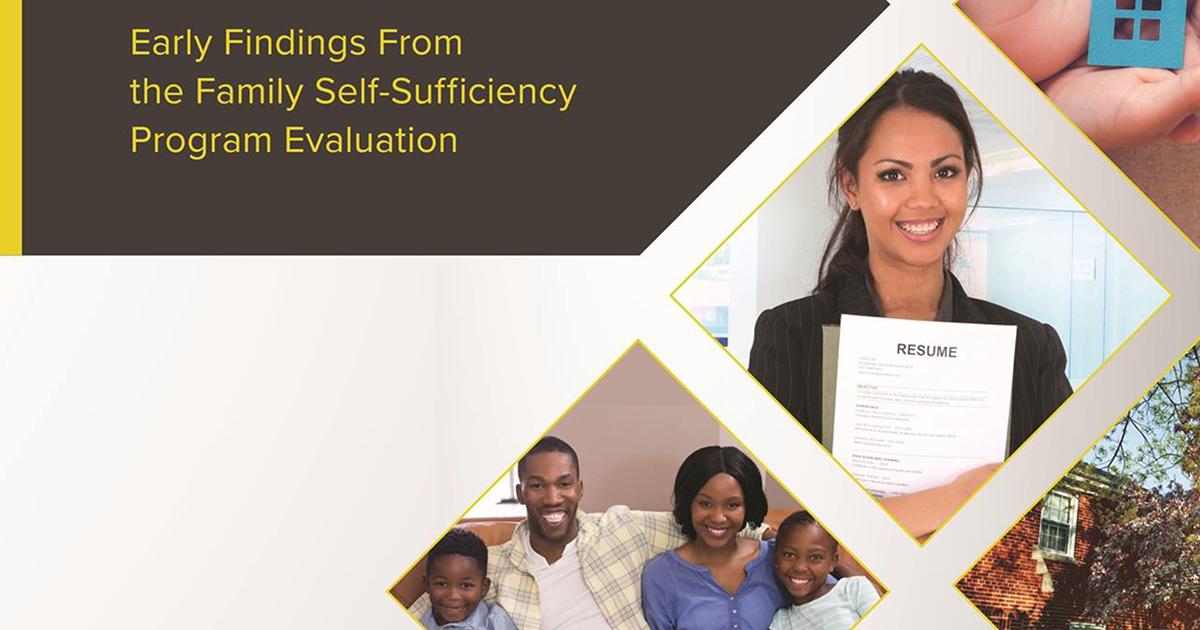Promoting Work and Self-Sufficiency for Housing Voucher Recipients
Early Findings From the Family Self-Sufficiency Program Evaluation

Households receiving rental assistance are among the poorest and most disadvantaged households in America. Since the mid-1980s, several U.S. Department of Housing and Urban Development (HUD) programs have attempted to blend housing assistance with a variety of support services designed to increase employment and improve the economic well-being of households receiving rental assistance. Operated since the early 1990s, the voluntary Family Self-Sufficiency (FSS) program is the main federal strategy to help Housing Choice Voucher (HCV) recipients move toward self-sufficiency. Through annual grants, HUD provides public housing agencies (PHAs) with resources for hiring FSS case managers, who work with participating heads of households to develop self-sufficiency plans (usually covering five years) and refer them to services in their communities. FSS also includes an incentive to work that helps families build long-term savings: Under HUD rules, as a household’s earned income increases, so does its share of rent; FSS directs an amount based on the rent increase to an interest-bearing escrow account maintained by the PHA and paid to participants when they reach key employment and self-sufficiency milestones. To learn more about the program’s effectiveness, in March 2012 HUD commissioned the first national randomized controlled trial of FSS. Eighteen PHAs agreed to participate in the national evaluation and together enrolled 2,556 working-age HCV holders in the study. This first report examines FSS program implementation, participants’ engagement in the program, and program impacts on labor force participation and government benefits receipt in the first 24 months after program enrollment. Early findings include:
-
PHAs have substantial discretion over FSS implementation, leading to broad variation in case management approaches, caseload sizes, and service delivery; the escrow component is more uniformly implemented, based on HUD guidelines.
-
FSS participants chose to pursue a broad range of goals, including employment, education and training, financial management and security, and homeownership-related activities. Less than half the participants, however, had set short-term goals ― that is, goals to attain within the first year of enrollment.
-
Sixteen of the 18 PHAs expected participants to communicate with their case managers quarterly or monthly. Programs generally fell short of that goal; about 27 percent of the FSS group interacted with an FSS case manager at least quarterly.
-
FSS increased participation in a range of employment-related services and support services by a statistically significant 13 percentage points over the control group. Effects larger than 13 percentage points were seen for services related to job search or post-employment assistance, financial security, and homeownership preparation, such as attending a homeownership workshop.
-
As of Month 18, about 38 percent of the FSS group had accrued some escrow and 35 percent had a positive escrow balance. Those with an escrow balance had accrued an average of $1,500.
-
About 56 percent of the sample was working at study enrollment. There is no evidence so far that FSS increased employment or average earnings in the first two years, though it led to a small shift from part-time to full-time employment. Impacts do not vary by subgroup ― for example, participants who are not working, or have low levels of educational attainment, or have disabilities at study enrollment.
As currently funded, the evaluation will follow study participants through 2018, for roughly the first three of the five program years. A final report will update the current findings and will document the progress enrolled FSS families are making at the three-year point toward the program’s long-term goals of increasing their earnings, reducing reliance on government assistance, and improving their material well-being.







